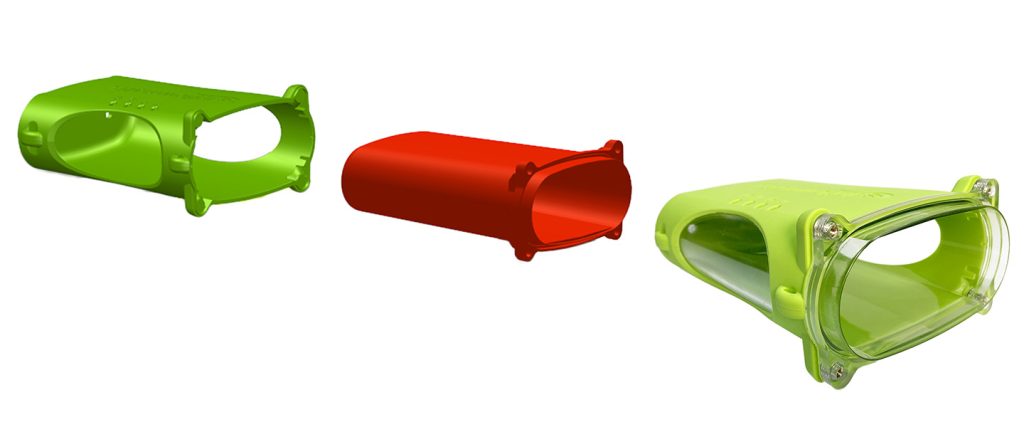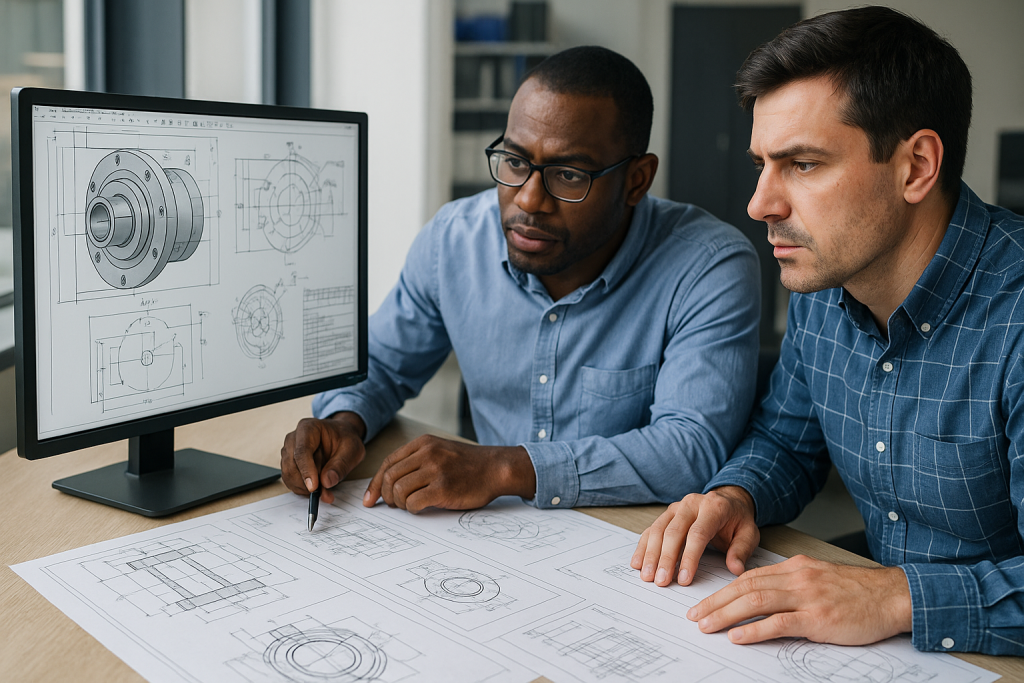
In the world of plastic injection molding, two techniques are frequently mentioned: insert molding and overmolding. While both combine multiple materials into a single component, they differ in process, purpose, and performance. Understanding these differences is crucial for engineers, product designers, and manufacturers who seek efficiency, durability, and cost-effectiveness in their production workflows.
This article explores how insert molding and overmolding work, their benefits and limitations, and how to decide which is best for your project.
I. What is Insert Molding?
Insert molding is a process where a pre-formed component—typically metal—is placed into a mold before molten plastic is injected around it. The result is a single integrated part with embedded functionality.
II. How Insert Molding Works
-
A metal insert (e.g., brass or steel) is placed in a mold.
-
Thermoplastic is injected into the mold, encapsulating the insert.
-
Once cooled, the finished part is ejected.
III. Applications
-
Automotive components (e.g., bushings, threaded inserts)
-
Medical devices with metal shafts
-
Electrical connectors
-
Wear-resistant joints
VI. What is Overmolding?
Overmolding is the process of layering a soft or elastomeric material (like TPE or silicone) over a rigid base (typically ABS, nylon, or polycarbonate). It enhances grip, improves aesthetics, and creates waterproof or shock-resistant parts.
VII. How Overmolding Works
-
A base part is molded or pre-formed.
-
It’s placed into a second mold.
-
A second material is injected, forming an external layer.
VIII. Applications
-
Toothbrushes with rubber handles
-
Handheld tools with soft grips
-
Electronic devices with shock-proof coatings
IX. Side-by-Side Comparison Table
| Aspect | Insert Molding | Overmolding |
|---|---|---|
| Process | Inserts metal/hard parts, then injects plastic | Injects soft/secondary plastic over a hard base |
| Materials Used | Brass, steel inserts + ABS, nylon, polycarbonate | Base: ABS, PC; Overmold: TPE, TPU, silicone |
| Typical Use Cases | Connectors, bushings, surgical tools | Power tool grips, phone cases, waterproof seals |
| Bonding Mechanism | Mechanical fit (around insert) | Chemical/mechanical adhesion between layers |
| Cycle Time | Generally shorter, fewer material layers | Longer due to multi-step or multi-shot process |
| Mold Complexity | Simpler molds, requires insert handling | More complex molds or multi-shot machines |
| Cost Efficiency | High in low to mid-volume runs | Costlier but ideal for mass production |
| Tolerance Control | High precision for embedded features | Good, but depends on material compatibility |
X. Data Parameters: Technical Comparison
Below is a technical breakdown of commonly used materials and temperature tolerances:
| Material | Typical Use | Melt Temp (°C) | Tensile Strength (MPa) | Flexibility | Used in |
|---|---|---|---|---|---|
| ABS | Structural inserts | 210–240 | 40–50 | Moderate | Insert & Overmolding |
| Nylon (PA6) | High-strength parts | 220–260 | 75–90 | Moderate-high | Insert Molding |
| Polycarbonate | Transparent, strong parts | 260–300 | 55–75 | Low-moderate | Insert Molding |
| TPE (Elastomer) | Soft-touch grips | 200–240 | 10–25 | High | Overmolding |
| Silicone | Medical/heat resistant | 180–220 | 5–15 | Very high | Overmolding |
XI. How to Choose Between Insert Molding and Overmolding
Choose Insert Molding if:
-
Your part requires mechanical strength, metal inserts, or conductivity.
-
You need to reduce assembly steps.
-
Your product includes high-load areas or rotational forces.
Choose Overmolding if:
-
You want ergonomic designs or soft grips.
-
Your part must be water-resistant, shockproof, or aesthetically layered.
-
Dual-material or multi-color visual appeal is important.
XII. Insert Molding and Overmolding at Boona Prototypes
At Boona Prototypes, we specialize in both insert molding and overmolding processes. With advanced CNC machining, in-house tool building, and fast turnaround services, Boona ensures tight-tolerance part manufacturing and multi-material precision for prototyping or full-scale production. Whether you’re embedding metal parts or layering soft polymers over rigid substrates, our engineering team provides tailored solutions that suit your application.
Visit our Insert Molding and Overmolding capabilities page for more information or to request a quote.
Conclusion
Insert molding and overmolding both provide innovative ways to combine materials in a single manufacturing step, eliminating the need for post-mold assembly. By understanding their differences, applications, and limitations, you can make an informed decision that benefits product design, cost, and performance.
Need help deciding or prototyping your design? Partner with experienced providers like Boona Prototypes to ensure your part meets functional and aesthetic goals with maximum efficiency.
FAQs
Q1: What is the main difference between insert molding and overmolding?
Insert molding involves placing a pre-formed part (often metal) into a mold before plastic is injected, forming one integrated component. Overmolding, on the other hand, involves molding a soft or second material over an existing part, often for grip, protection, or aesthetics.
Q2: Which process is stronger—insert molding or overmolding?
Insert molding typically provides higher mechanical strength because it bonds directly around solid inserts like metal. Overmolding is designed more for surface enhancements like grip and shock absorption rather than structural strength.
Q3: Can the same material be used for both insert molding and overmolding?
Some thermoplastics like ABS or polycarbonate can be used as base materials in both processes, but the secondary materials differ—overmolding typically uses softer elastomers (TPE, TPU, silicone) which aren’t suitable for insert molding.
Q4: Is insert molding more cost-effective than overmolding?
Insert molding is generally more cost-effective for small to medium production runs, especially when reducing post-assembly steps. Overmolding involves more complex tooling and longer cycle times, which can increase costs, but it offers enhanced product value in consumer-facing designs.
Q5: What are the typical lead times for each process?
Lead times vary by part complexity, but:
-
Insert molding: 2–4 weeks for tooling, shorter cycles
-
Overmolding: 3–6 weeks due to dual-shot tooling or transfer molding
Companies like Boona Prototypes can help shorten lead times with in-house toolmaking and rapid prototyping.
Q6: Are overmolded parts recyclable?
Overmolded parts made from chemically compatible materials (like ABS + TPE) can sometimes be recycled, but multi-material parts are often harder to recycle due to separation difficulties.
Q7: Can I combine insert molding and overmolding in one part?
Yes. Some advanced designs first use insert molding to embed hardware or electronic components, followed by overmolding for grip, sealing, or insulation—this hybrid process is common in medical devices and rugged electronics.
Q8: What types of inserts can be used in insert molding?
Common inserts include:
-
Metal fasteners (brass, steel, copper)
-
Screws and threaded rods
-
Ceramic parts
-
Electronics (pins, terminals, sensors)
Q9: Does overmolding require a two-shot molding machine?
Not always. Overmolding can be done using:
-
Two-shot molding machines for high-volume production
-
Transfer molding with two separate tools for small to mid volumes
Q10: How do I know which process is better for my design?
Consider your priorities:
-
Choose insert molding for mechanical strength, embedded parts, and lower volume.
-
Choose overmolding for user comfort, visual appeal, and protective layering.
A design consultation with experts like Boona Prototypes can help you determine the optimal method.



